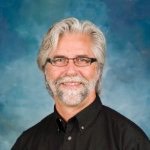 Chasing the wrong end of the stick versus musical nirvana … and so it goes with the amplification of recorded sound and music.
Chasing the wrong end of the stick versus musical nirvana … and so it goes with the amplification of recorded sound and music.
Even the best amplifiers are simply at the wrong end of the stick …
It wasn’t until I listened to my first Tenor amplifier that I new something better was possible. Previous to Tenor, I listened to recorded music through very high quality audio systems - systems that provided some very convincing sound - so I thought. Unfortunately, I was always aware that the music was being reproduced through an audio system where the majority of the music I owned was not recorded well enough, or so I thought, to convince my ears and my brain that it was real! (I listen mostly to special audiophile demo discs).

A live acoustic instrument, let’s say a horn instrument, when played through a typical stereo system does not sound exactly right. Most times there is a harsh edge to the sound or perhaps with some a rolled off high frequency and a bloatey bass. This harshness or colouration is a result of ampliifer distortion characteristic of the design of the ampliifer - which leads to listening fatigue (a common term in the audio industry used to describe becoming tired and disinterested when listening to amplified music.
Designing an amplifier without listening fatigue necessates a completely different design fundamental approach. All amplifiers create distortions that the brain must work hard on to make sense of - relying on memories of these instruments or events. The brain knows something is not right and tries really hard to alter the perceived sound to make it correct. Uultimately the brain tires of this exercise with the end result being listening fatigue.
With a Tenor amplifier, you experience only the music - unimpaired from any listening fatigue. The naturally low distortions of a Tenor amplifier are carefully mapped with a proprietary circuit (see HSI for further reading) that presents the harmonic structure properly. Your persception is there is zero distortion. This technology is the result of over 40 man years of research and millions of dollars of investment.
David